Resource and Waste Management 101
Time required: 60-70 minutes
Welcome to Resource and Waste Management 101. This module was developed by UNB Sustainability and the Office of Experiential Education to introduce key topics in resource and waste management.
To get started, please watch the video or read the video transcript. Click the play button on the video to start. You can turn on video subtitles using the [CC] button in the bottom right corner of the video or open the video transcript.
Prefer text?
Read the transcript
This module was developed by UNB Sustainability and the Office of Experiential Education to introduce key topics in Resource and Waste Management.
Let’s begin by looking at what we mean when we talk about resources:
Natural resources are natural assets (raw materials) that support life and meet people’s needs. They can be used for economic production or consumption and are necessary to support all life on Earth.
Natural resources can be used directly for food, recreation, housing and infrastructure, transportation, and technology. They can also be used indirectly for air quality control, flood and storm protection and climate control.
There are two categories of natural resources: renewable and non-renewable:
Non-renewable resources are finite. They do not regenerate on human-time scales. Once used up, the resources are gone forever. Examples include fossil fuels, coal, and oil. An often-overlooked example is Canada’s most undervalued natural resource, fresh water.
Renewable resources are considered “infinite.” These resources can be replenished at roughly the same rate as they are used. But, without proper management or conservation, renewable resources can also be depleted. Renewable resources are key sources for renewable energy. Examples include forests, solar energy, and wind energy.
In this module, we will look at the relationship between natural resources (including both renewable and non-renewable resources and sustainable waste management. We'll look at several key concepts, including the resource lifecycle and the waste management hierarchy. We’ll also look at some of UNB’s waste management initiatives.
Did you know that fresh water is considered a non-renewable resource?
Making up only 3% of the world's water, fresh water is precious. As glaciers continue to disappear, groundwater reservoirs are used up, and lakes and rivers run dry due to climate change, protecting our fresh water resources should be a top priority. Learn more.
Introduction to waste
Please watch the video below or read the video transcript below.
Prefer text?
Read the transcript
Waste refers to any material or substance that is discarded after no longer being suitable for its intended use.
According to the United Nations Environmental Programme, “Waste is a global issue. If not properly dealt with, it poses a threat to public health and the environment. It is a growing issue linked directly to the way society produces and consumes. It concerns everyone.”
There are several types of waste. They can be categorized as hazardous and non-hazardous waste.
Hazardous waste is waste with harmful or dangerous properties. Hazardous waste is often categorized as combustible, corrosive, reactive, or toxic. It poses a direct threat to people and the environment.
In contrast, non-hazardous waste is not considered harmful to the environment or society. But it is worth highlighting that non-hazardous waste can still be classified as a pollutant when it is not disposed of properly.
Hazardous waste is typically in the form of radioactive, electronic, biological, and some industrial waste.
Non-hazardous waste is usually found in typical household and business garbage. It can be classified as municipal or other (non-municipal). Municipal waste includes organic (food), packaging, and other materials such as glass, plastic, and metal. According to the EPA, an example of non-municipal waste is non-hazardous industrial waste, such as coal ash.
Understanding the difference is important because it helps us to protect the environment and the people in our communities by implementing appropriate waste management practices.
“Non-hazardous waste can also be a risk to human health. Plastic is one example as it may not directly harm humans the indirect effect is detrimental to human life by creating environmental waste that is now choking the oceans and distributing micro-plastics into our drinking water. This is one problem with classification systems. We need a better way of looking at waste. Perhaps reclassifying waste based on whether it can safely be returned to the earth such as organic waste that can be composted vs waste that may have detrimental effects further downstream.”
- Cecelia Brooks, Saint Mary's First Nation Elder
Key definitions
Natural resources – Natural assets (raw materials) that support life and meet people’s needs. They can be used for economic production or consumption and are necessary to support all life on Earth. Natural resources can be used directly for food, recreation, housing and infrastructure, transportation, and technology. They can also be used indirectly for air quality control, flood and storm protection, and climate control.
Renewable resources – Resources that are considered “infinite.” These resources can be replenished at roughly the same rate as they are used. Examples include forests, solar and wind energy.
Non-renewable resources – Finite resources that do not regenerate on human-time scales. Once used up, the resources are gone forever. Examples include fossil fuels, coal, and oil.
Sustainable resource management – Managing resources in a way that ensures resources are not depleted to the point where they impact future generations.
Resource lifecycle – A series of stages a resource goes through from primary production or extraction to “end-of-life” or “cradle-to-grave.” Traditionally a resource lifecycle is linear, following a pattern of extraction, manufacturing, distribution, consumption, and disposal. A lifecycle can be interrupted and transitioned to a cradle-to-cradle model, where resources are reintroduced instead of disposed of.
Waste management – Strategies for dealing with materials no longer in use. There are various processes available including recycling, reusing, destroying, processing, and preventing waste.
Hazardous waste – Waste with harmful or dangerous properties. Hazardous waste is often categorized as ignitable, corrosive, reactive, or toxic.
Non-hazardous waste – Materials that are not considered to be dangerous but can still harm the environment. These materials must still be disposed of properly. This type of waste is usually found in typical household and business garbage.
Waste management hierarchy – A framework used to prioritize waste management decisions. In order of most desirable management decision to least: prevention, minimization/reduction, reuse, recycling, energy recovery, and disposal.
Resource and product lifecycle
When discussing natural resources or waste management, it is easy to think of each topic as independent of one another, without recognizing their relationship.
For natural resources to be considered as useful, they must be converted and transformed into goods and services to benefit people and the environment. Unfortunately, some of the most pressing environmental challenges are a result of excessive resource consumption.
Canada traditionally follows a linear economy. This can be thought of as a “take-make-dispose” approach. A resource is converted into a product and then disposed of when it is no longer useful or wanted.
Click on each icon in the image to learn about what the product life cycle includes:
Click here to view the accessible version of this interactive content
The process of creating materials from their natural form requires a significant amount of energy and generates large quantities of waste. This inevitably increases atmospheric greenhouse gas emissions.
In a linear economy, value is created by producing and selling as many products as possible. But unfortunately, this enables unsustainable resource extraction and waste disposal, potentially damaging our environment. Hence the need for Life Cycle Assessments.
A Life Cycle Assessment is conducted to quantify the environmental impact of each stage. This allows organizations to examine the relationship between production, the environment and social issues involved in a product's life cycle. For example, let's review a cotton T-shirt's life cycle assessment results.
Please watch the video or read the video transcript.
Prefer text?
Read the transcript
Life Cycle Assessments quantify the environmental impact of each stage in the life cycle of a resource or product. This assessment allows us to examine the relationships between production, the environment and social issues involved in a product's life cycle.
Let’s take a look at a plain cotton t-shirt:
Before there is a t-shirt, there is cotton. The Extraction stage of the t-shirt’s life cycle involves the cultivation, harvesting and transportation of cotton from the farms where it is grown. This stage requires the natural resources of water, soil, and solar energy to grow the cotton, along with the tools and equipment need to cultivate, harvest and transport the cotton. Unfortunately, most cotton production involves the use of chemical fertilizers and pesticides, which can have significant effects in terms of ecotoxicity and environmental harm.
During the Manufacturing stage, the raw cotton goes through several steps, including:
- Spinning
- Knitting
- Dyeing
- Making up (the actual construction of the t-shirt itself)
Each step in the Manufacturing stage requires the input of energy, additional materials (such as dye and equipment), and loss, including loss of raw fiber during spinning, loss of yarn during knitting, and loss of fabric during making up. Manufacturing can also include greenhouse gas emissions from the use of energy and equipment and chemical waste from dyeing.
Now that we have the actual product (a t-shirt), we move on to Distribution, involving the transportation of the t-shirt to stores and consumers. This stage requires energy in the form of fuels and results in additional greenhouse gas emissions.
The product lifecycle continues once the product is in the hands of consumers during the Consumption phase, where the t-shirt goes through washing, drying, and (potentially) ironing, continuing to use energy, water and materials such as soap.
When the consumer is done with a product, it enters the Disposal phase, which in a linear economy typically means ending up in the garbage and, ultimately, the landfill.
When we consider all of these stages, we can quickly see that the life cycle of a t-shirt has a variety of environmental impacts, including:
- Global warming potential
- Ecotoxicity/environment harm potential
- Water use
- Energy (Electricity) use
The lifecycle concept is essential for broadening our perspective and to better understand the cause-and-effect relationship of each of these stages. This is not only important for economic prosperity but also for mitigating environmental impacts and promoting societal well-being.
Learn more about the impacts of the lifecycle of a t-shirt
Check your understanding
Sustainable resource management
Natural resources support life and economic processes. Learn more about them and how to manage them sustainably by clicking on the following image:
Click here to view the accessible version of this interactive content
Sustainable use of natural resources strives to maintain long-term use while maximizing social benefits and minimizing environmental impacts. Natural resources are often considered key assets for driving development and generating wealth.
So, when humans overuse natural resources for their own benefit, resource depletion (when resources become scarce because they are consumed faster than they can be replaced) results.
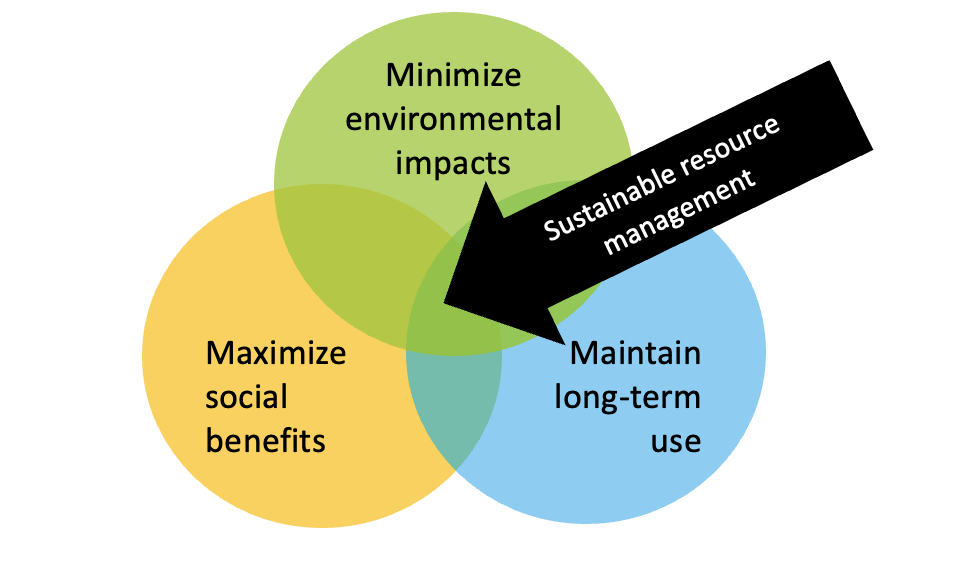
Sustainable resource management lies at the intersection of three priorities to minimize environmental impacts, maximize social benefits, and maintain long-term use
For example:
Commercial fisheries are vital to the Atlantic Provinces' economic and social framework, particularly Indigenous and rural coastal communities. However, poor management can make this renewable resource non-renewable. For example, First Nation communities have witnessed years of overfishing due to industrial harvesting and inefficient commercial fishing practices. As a result, fish stocks declined while ghost gear (discarded or lost fishing gear) increased.
Therefore, when not sustainably managed, this renewable resource becomes depleted and causes cascading effects and long-term damage to the environment and people's economic, social, and cultural well-being.
Learn more about ghost gear in the Atlantic provinces
Sustainable waste management
Waste management goes beyond discarding garbage. It involves all the activities and processes required to handle waste material. These include collection, diversion, and disposal.
Sustainable waste management generates environmental, social, and economic benefits for all. By enforcing proper waste management practices, communities also contribute to sustainable development by achieving several SDGs.
Connecting waste management and the SDGs
SDG 3: Good health and well-being
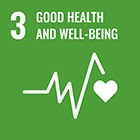
- Prevents hazardous waste from entering drinking water or affecting air quality
- Protects human health
SDG 12: Responsible consumption, and production
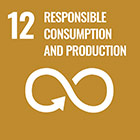
- Improves resource efficiency
- Reduces waste during production
SDG 13: Climate action
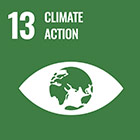
- Reduces greenhouse gas emissions
SDG 14: Life below water
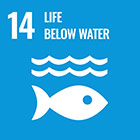
- Reduces solid waste runoff and accumulation of plastics in marine environments
- Reduces exposure to hazardous waste
SDG 15: Life on land
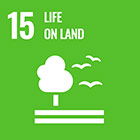
- Reduces presence of garbage and plastics on land
- Reduces land required for waste storage and processing
- Reduces exposure to hazardous waste
How do you achieve sustainable resource and waste management?
1) Waste diversion
The process of redirecting waste from the landfills. This can be achieved though composting organic waste or recycling inorganic waste to ensure minimal waste is incinerated at the landfills.
2) Waste management hierarchy
Since the rate of resource consumption and waste generation has increased over the years, it has become evident that human actions have had a negative impact on the environment, hence the need for better management.
Introduced by the European Commission in the 1970s, the waste management hierarchy is a framework designed to guide and rank waste management decisions at both the individual and organizational levels. In this hierarchy, waste prevention is the most environmentally friendly, while disposal is the least preferred option for waste management. This concept is more commonly known as the 3Rs: reduce, reuse, recycle.
However, there are five steps within the complete hierarchy. These steps have been adopted by UNB to ensure that more waste is diverted from the landfill than disposed of.
The 3 Rs vs. the 5 Rs
Let's look at the differences between the 3Rs and 5Rs in the waste management hierarchy.
The 3 Rs
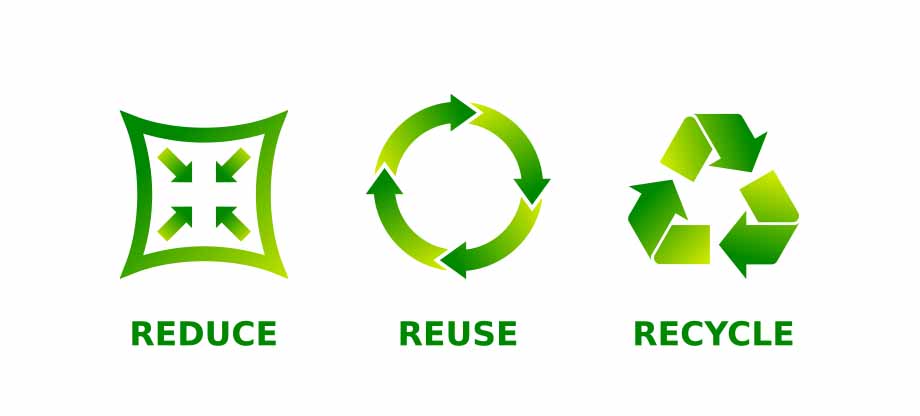
Both the 3 Rs and the 5 Rs include the steps Reduce, Reuse, and Recycle.
Reduce: Waste reduction starts with the product manufacturer and ends with the customer. While the manufacturer controls the materials and how the product is made and packaged. It is the customer’s responsibility to choose products with the least environmental impact. The best way to reduce waste is to not create it in the first place.
Reuse: This step involves taking an item and either using it again for its original purpose or finding it another purpose.
Recycle: This step is more complex compared to the first two. It involves taking an item through a manufacturing process so it can be used to create new materials and items.
The 5 Rs
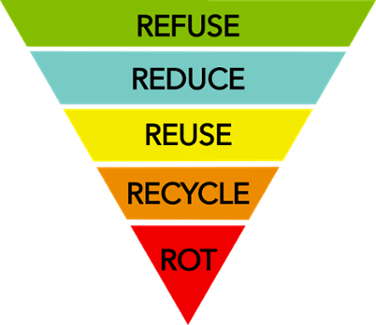
The 5 Rs extend beyond the more traditional 3 Rs model to include Refuse and Rot. Following the 5 Rs model results in less waste being created and greater waste diversion than the 3 Rs model.
Refuse: This step asks us to consider what we really need before we even begin to interact with a product. If we say no to things we don't need, we can decrease our waste before it is ever created.
Rot: Some of the waste we create, such as food scraps and garden waste, is organic waste that can be composted. Composting can be thought of as a natural form of recycling, in which the natural processes of rot return the nutrients in organic waste to the soil.
Reflection
Please take a few minutes to write and answer the provided reflection questions. A good response is usually a minimum of five sentences.
We strongly recommend that you:
- Keep a reflection notebook, log, or journal, and save a copy of your reflection in it
- Share and discuss your response with others
- If you are completing this module as part of a class or workshop, you will likely be discussing your reflection as part of a group activity.
If you are completing this module alone, try finding a group of interested friends or colleagues to discuss your reflections with.
1.Reflect on the product life cycle and the example life cycle assessment on the cotton t-shirt. What did you learn about the creation of everyday products that you own and use? Why do you think knowing and understanding this cycle matters? How will this knowledge affect your actions moving forward?
2.Thinking about the 5Rs, list 5 actions you can take (one for each of the Rs) to improve your waste management. (ex. reusing old gift bags and wrapping for presents).
Resource and waste management in action
Now that you have a more holistic view on resource and waste management, it is time to learn about how resource & waste management takes place in Canada, New Brunswick, and at UNB.
Natural resource management
Canada is globally recognized for the abundant wealth of its natural resources, a key contributor to the economy. Hence, the need for all levels of government to manage both renewable and non-renewable resources.
Provincial/territorial governments
- Legal authority to manage their own non-renewable, forestry and electrical energy resources
- Permitted to enact laws related to exploring non-renewable resources and developing, conserving, and managing natural resources
Local, municipal, and Indigenous governments
- Required to make by-laws dealing with local matters such as zoning regulations
- Indigenous governments exercise a range of powers over reserve lands, with many being similar to local, municipal, or provincial governments
UNB
Manages natural resources through decisions made about:
- Central heating plant fuels
- Utilities use and delivery, including steam, water, electricity, and other fuels
- Campus vehicle fleet fuel
- UNB Woodlot and Noonan Research Forest management
- Paper and printed materials use
Waste management
Provincial/territorial governments
- Develop and implement waste reduction policies and programs as well as monitor waste management facilities
- In New Brunswick, we follow the 2001 New Brunswick Waste Reduction & Diversion Action Plan, which guides local decision makers as they work towards enhancing waste management initiatives and programs.
Municipal governments
- Responsible for the collection, recycling, composting, and disposal of waste, following the New Brunswick Clean Environment Act
- Fredericton manages waste through the Garbage and Recycling program. This provides curbside collection of garbage and recycling materials services to approximately 18,000 residences. Waste and recyclables are delivered to the landfill and material sorting recovery facility operated by Fredericton Regional Solid Waste.
- Saint John introduced the Waste Wise Program in 2022. This program was designed to increase curbside recycling and composting collection services and limit garbage among residences. By providing free recycling materials and services, the city is encouraging residents to recycle and reduce waste that ends up in the landfill.
UNB
- Waste audit: A waste audit was conducted on the Fredericton campus in 2018 by the Green For Life (GFL) incorporation. There will be future waste audits conducted.
- Three-sort bins: In 2015, UNB started switching over single use trash-bins to a three-sort bin. This will improve the institution's recycling capabilities.
- 5R Hierarchy: These steps have been adopted by UNB to ensure that more waste is diverted from the landfill than disposed of.
- Partnership with Habitat for Humanity (HFH) Restore: A policy that was put in place since late spring 2022 that before we dispose of office furniture or other good quality items, UNB reaches out to the local HFH Restore to coordinate a pick-up of goods on campus. Learn more on our Green Review Blog.
- Saint John Garden Committee: There is a local garden that UNB members have access to grow their food during the summer months.
- E-waste locations: To make it easy for you to dispose of unwanted personal electronic devices, such as cell phones, batteries, and empty printer cartridges.
- Fredericton: Outside the ITS department in Head Hall (D level) AND in the Harriet Irving Library Commons
- Saint John: Call2Recycle boxes are located in various departments around campus. The most accessible location for the general population is on the 3rd floor of Hazen Hall, outside the Information Services and Systems office.
View the UNB campus sustainability maps
Conclusion
In this module, you learned about both natural resource management and waste management. You learned about the differences between renewable and non-renewable resources and between hazardous and non-hazardous waste. We introduced the resource or product life cycle and looked at a simple cotton t-shirt as an example of a life cycle assessment. We also looked closely at the waste management hierarchy, including a comparison of the more commonly known “3 Rs” and the more complete “5 Rs”. You took a few minutes to check your understanding of key concepts and some time to reflect on both life cycle assessment and the “5 Rs.” Finally, you learned about how natural resource and waste management work in Canada at the national, provincial, and municipal levels, and how UNB is doing our part.
Resources
Read more:
- Call2Recycle: Battery recycling
- Germany’s waste innovation
- Smart phone recycling
- Stemming the tide: Taking action on campus against plastic pollution
- Sustainability and the waste hierarchy
- The sustainable use of natural resources: The governance challenge
- Trends in waste management in Canada
- Waste disposal for newcomers in Canada
- What a waste: An updated look into the future of solid waste management
- What is sustainable forestry?
- Why does water matter?
Videos:
- Waste generation and management
- What happens to plastic you throw away
- What a waste 2.0: Everything you should know about waste
- How a landfill works
- Fredericton Region Solid Waste Commission
Webinars & tools:
- Global waste management outlook
- Sustainable management of the coastal and marine resources (UN guide)
- Taking steps toward marine and coastal ecosystem-based management: an introductory guide (UNEP)
- Waste management opportunities in Canada
Academic resources:
- López-Toro, A. A., Rubio-Romero, J. C., Suárez-Cebador, M., & Arjona-Jiménez, R. (2016). Consideration of stakeholder interests in the planning of sustainable waste management programmes. Waste Management & Research, 34(10), 1036–1046.
- Mehta, D., Paliwal, D., Tege, S., & Sankhla, V. S. (2018) Sustainable waste management: an approach towards sustainability. Journal of Emerging Technologies and Innovative Research, 5(9), 101.
- Pluskal, J., Šomplák, R., Nevrlý, V., Smejkalová, V., & Pavlas, M. (2021). Strategic decisions leading to sustainable waste management: separation, sorting and recycling possibilities. Journal of Cleaner Production, 278.
- Seadon, J. K. (2010). Sustainable waste management systems. Journal of Cleaner Production, 18(16-17), 1639–1651.
Resource and waste management in social media
Podcasts
- Age of Plastic
- Listen on Spotify or Apple Podcasts
- Simply Science
- Listen on Spotify or Apple Podcasts
- What a Waste
- Listen on Apple Podcasts
- Waste Not WHY Not
- Listen on Spotify or Apple Podcasts
- The Energy Transition Show with Chris Nelder
- Listen on Spotify or Apple Podcasts

This work is licensed under a Creative Commons Attribution-NonCommercial 4.0 International License.
